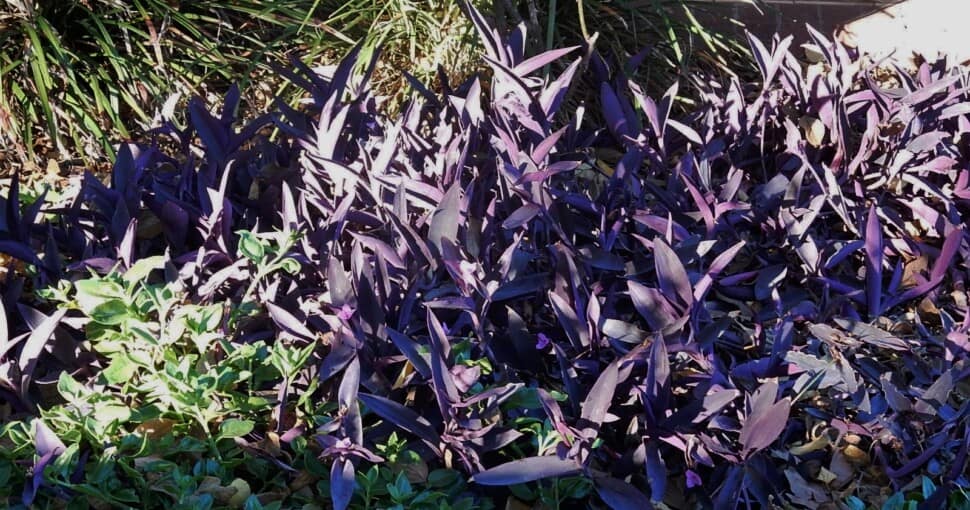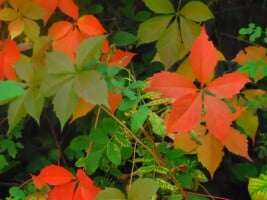The Wandering Jew plant or Inch Plant as they are commonly known, are incredibly diverse. With a wide variety of plant species ranging from pointed sword-shaped dark purple spears to delicate clump-forming plants.
Contents
- 1. Purple Heart – (Tradescantia Pallida)
- 2. Fantasy Venice – (Tradescantia Nanouk)
- 3. Boat Lily / Moses In A Basket – (Tradescantia Spathacea)
- 4. Wild Crocus – (Tradescantia Longipes)
- 5. Cobweb Spiderwort – (Tradescantia Sillamontana)
- 6. Spider Lily – (Tradescantia Virginiana)
- 7. Zebra Plant – (Tradescantia Zebrina)
Although most Wandering Jew plants are identifiable due to their iconic purple and green foliage, this is along with their three-petaled purple, or pink flowers and bright yellow stamen.
Even though there are a few Wanderings Jew, or inch plant varieties, they are all utterly unique. And unlike other plant species, they do not have any known lookalikes. Therefore, only the most prominent Tradescantia are listed in this article.
So, here’s a brief run-down on the most spectacular Wandering Jew, or inch plant varieties, including their most outstanding features:
- Purple heart – plants have pointed stems with brightly contrasting bright pink flowers.
- Fantasy Venice species – have tricolor foliage of light purple, cream, and light green.
- Boat lily/ Moses-in-a-basket – plants have boat-shaped flowers and green and purple leaves.
- Wild crocuses are low-growing plants that thrive in natural habitats and urban gardens.
- Cobweb spiderwort – has grey-green foliage that glitters in the light.
- Spider lily – plants feature stunning three-petaled magenta, pink, or blue-hued flowers.
- Zebra plants – have striking green, purple, and grey striped foliage.
1. Purple Heart – (Tradescantia Pallida)
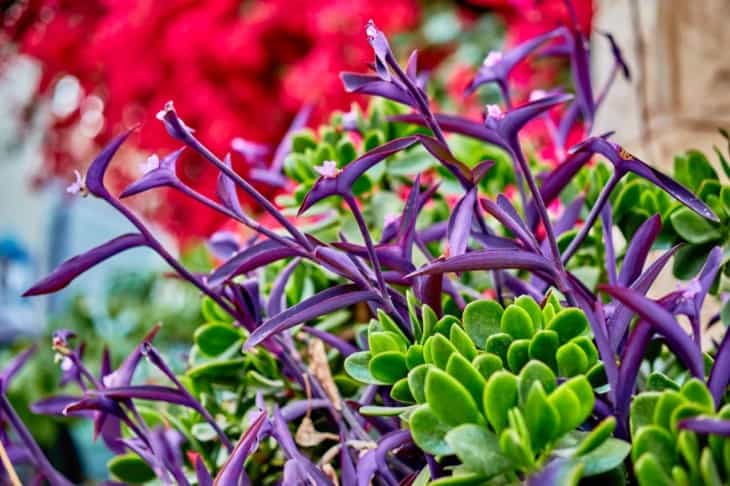
Although there was much debate on whether the striking purple heart belongs to the Wandering Jew, Tradescantia pallida, or the Setcreasea pallida plant family as they were formerly classified. The purple heart is now considered part of the spiderwort or Commelinaceae family.
Native to Mexico, the purple heart features elegant dark purple lance-shaped foliage with elongated, sheathed stems covered with a fine layer of light protective hair. However, their fragile stems tend to break off if they are knocked.
Purple hearts produce delicate thee-petaled pink or lavender flowers with sunny yellow little stamen from mid-summer well into fall that contrast beautifully with their dark purple foliage and stems.
This annual, hardy trailing plant flourishes in USDA zones 7-10, although they can be grown indoors in colder regions. And they tend to die in winter in colder areas and regrow in spring.
While drought-tolerant purple hearts are suited to hanging baskets, they truly shine when planted on mass as a ground cover in full sun. Although they tolerate shade, they will be greener and less dark purple.
To keep them in a prime condition, apply fertilizer once a month, and pinch them back to create more compact growth. And once they have flowered, cut them back so they don’t become too leggy.
If you plan to grow them indoors midwinter, stop applying fertilizer, and reduce the amount of time they are watered during their dormant phase until they regrow in spring.
Related: 5 Purple Heart Plant Benefits
2. Fantasy Venice – (Tradescantia Nanouk)
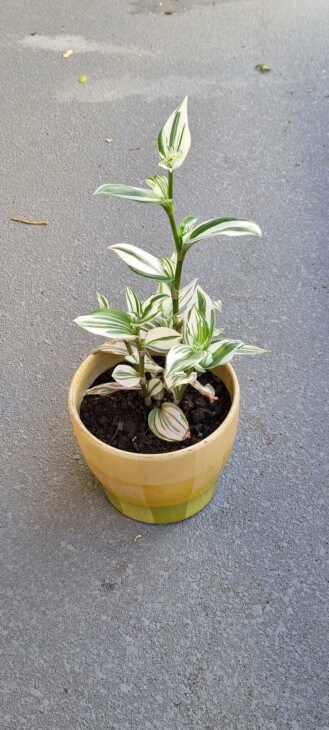
The fantasy Venice, or Tradescantia nanouk cultivar, was designed in a Netherlands lab in 2012 via cross-pollinated Tradescantia albiflora seedlings.
This plant was designed to be more compact, with striking variegated Tradescantia colors and flowers, and it’s clear that its creators achieved their goals.
The fantasy Venice is a fuss-free plant with beautiful foliage diversification ranging between light purple, cream, and light green tricolors.
This winter-hardy plant is an excellent houseplant, and it thrives in frost-free climates in USDA zones 10-12, where it can grow outdoors all year round.
Although, they do need warmed daytime temperatures above 55F. They should never be exposed to icy temperatures (under 40F) or severely hot temperatures (over 100F) for too long.
They are an ideal gift for anyone new to caring for plants, as they should only be planted in well-draining soil and watered when their soil is dry.
Fantasy venice plants don’t need fertilizer applications as much as other plants. They only require a little diluted liquid fertilizer application every 6-8 weeks, not during the winter months.
3. Boat Lily / Moses In A Basket – (Tradescantia Spathacea)
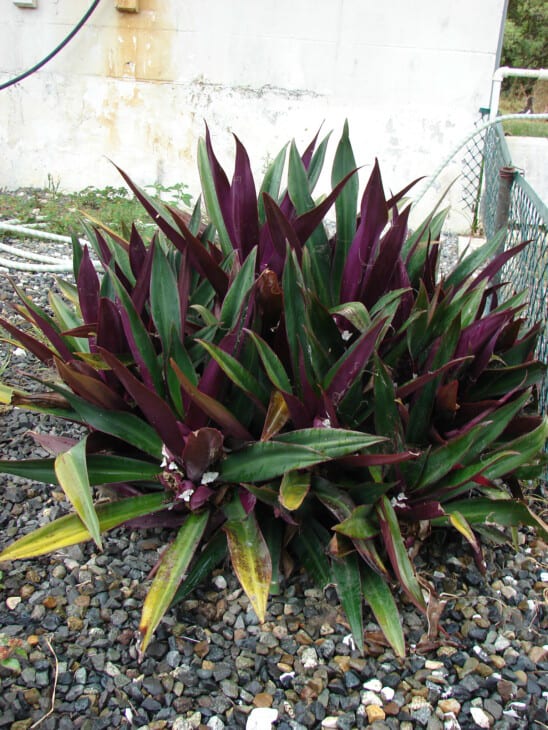
The Tradescantia spathacea, commonly referred to as the boat lily, Moses-in-a-basket, or oyster plant, is an evergreen, clump-forming plant that typically thrives in warm, tropical climates.
Native to Guatemala, southern Mexico can grow up to 12 feet, with a profusion of sword-shaped and sturdy dark green leaves that are purple underneath their foliage.
The purple, boat-shaped, or bract-enclosed white flowers have 2-3 petals with a tiny bright yellow stamen that bloom all year round.
This plant is easy to propagate and can grow indoors in well-draining potting soil, especially on a sunny patio. Although it is the only Tradescantia cultivar that is not suited to hanging baskets as they grow upwards.
Since their sap is mildly irritating and toxic, they should be kept well away from kids as they are poisonous if consumed in large quantities.
They can also be planted outdoors in warmer climates (zones nine and up), although they spread quickly and can become invasive. So, ideally, plant them in a sunny area without companion plants.
4. Wild Crocus – (Tradescantia Longipes)
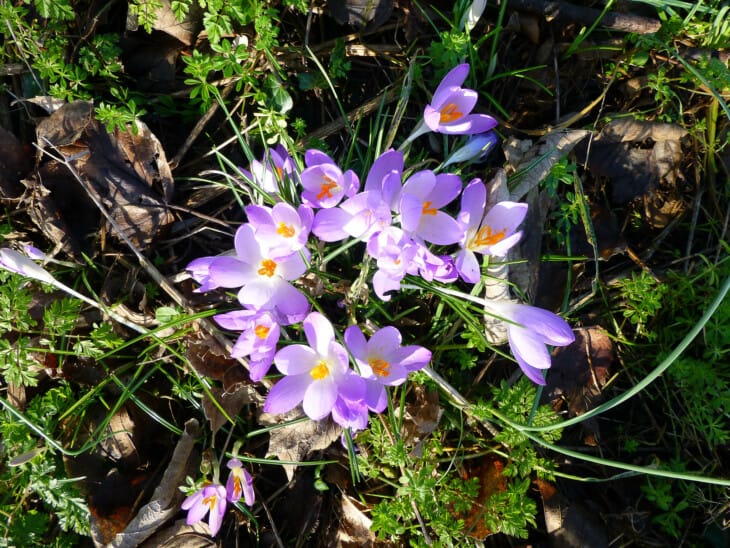
Commonly referred to as wild crocus, Tradescantia longipes is an evergreen, trailing perennial that typically grows on rocky terrains and wooded slopes in the Ozark region of Arkansas and Missouri.
Unlike other Tradescantia cultivars, the wild crocus is a clump-forming, low-growing plant with 3-petaled purple-and-pink-hued flower buds and yellow-hued stamen, which only flower one at a time at ground level and not a few inches upwards.
They can be planted outdoors in USDA zones 4-9, reaching a maximum height and width of 8″ in a partly shaded area, well-draining, acidic, and moist soil. Although, they need to be divided when overcrowded, as they can also self-seed.
Wild crocus typically blooms from May to June, following which they should be cut back to promote growth to blossom in the fall potentially.
5. Cobweb Spiderwort – (Tradescantia Sillamontana)
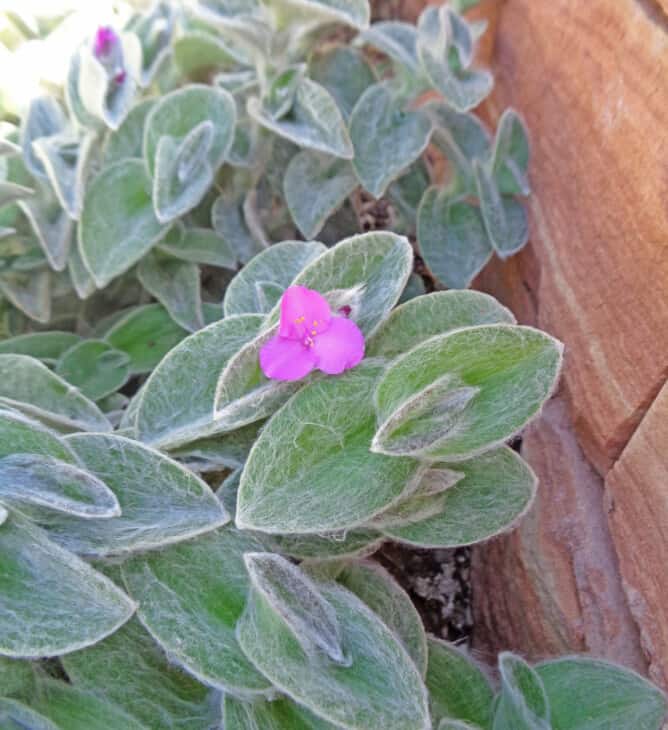
Native to Mexico, the Tradescantia sillamontana, or Cobweb Spiderwort, is another groundcover that tends to grow upright to a height of 12-18 inches.
Unlike some other Tradescantia plants, its cobweb-designed foliage, with a fine layer of silver-tinted hairs, can turn grey if exposed to too much sun, which contrasts beautifully with its bright purple blooms and yellow stamens.
These striking plants are suited to warmer climates (Zones 10-11). They are a fantastic ground cover, even in partially shaded areas, especially when paired with other succulents. And they look striking when planted in hanging baskets.
6. Spider Lily – (Tradescantia Virginiana)
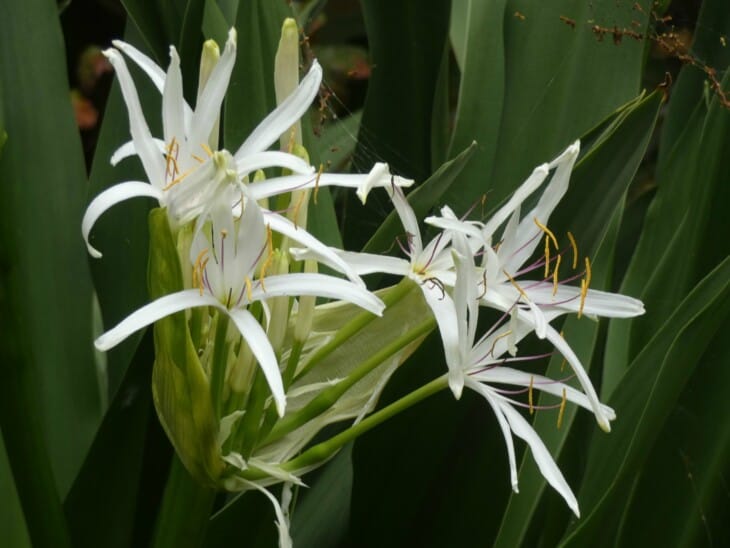
The striking Tradescantia virginiana, commonly referred to as the spider lily or day flower, is a highly popular clump-forming perennial native to central and eastern US regions.
Coveted for its stunning three-petaled magenta, pink, or blue-hued flowers, and contrasting yellow stamen, set amongst dark green arched foliage that can grow in height up to 3 feet, and 1 foot wide.
And they are a great addition to any garden as they attract bees and butterflies.
They are suited to USDA climate zones 4-9. Although they need consistently moist and fertile soil, spider lilies are hardy. They can adapt to most typical garden soil types. Although they are not drought-tolerant and need to be watered more often during dry spells.
7. Zebra Plant – (Tradescantia Zebrina)
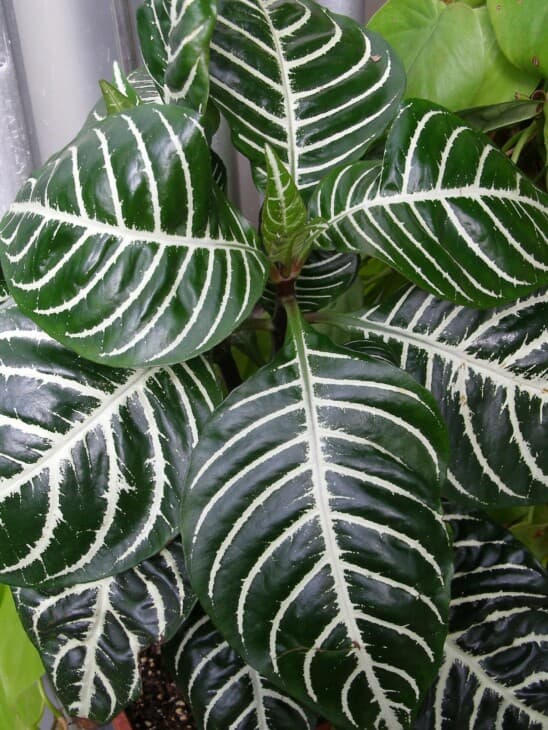
The iconic, Tradescantia zebrina, commonly referred to as the silver inch, or the zebra plant is an ideal houseplant for novice gardeners, and when grown outdoors in the right sunny conditions.
Related: 10 Plants That Look Like Zebra Plants
The aptly named zebra plants have green, purple, and white-silvery striped leaves at the top, and purple underneath, with a fine layer of hair that sparkles in the sunlight.
Zebra plants also have white or violet-hued boat-shaped blooms that consist of 3 petals and yellow stamen. Although house plant versions rarely bloom, those grown outdoors flower intermittently throughout the year.
And they should ideally be planted in a sunny garden area to make their colors more pronounced or in a partially shaded spot in hot regions.

